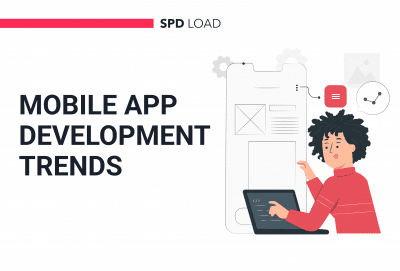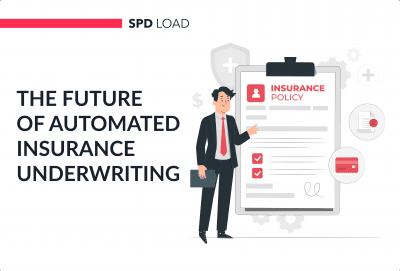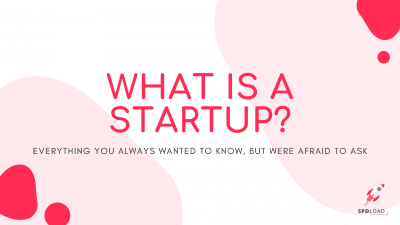5 Key Usability Tests That Will Boost Your Startup
- Updated: Nov 08, 2024
- 7 min
Launching a startup is a challenging task on so many levels.
This is when you have to constantly test your product to validate or reject initial hypotheses and fine-tune its design and usability.
The best way is to have potential clients who are not familiar with your product evaluate it via usability testing. Getting objective feedback from your target audience enables you to improve user experience further.
There are various options for usability testing, all of which can bring your startup to the top.
In this article, we’ll give you more in-depth information on usability testing and some of the most popular ways to conduct it.
Building a startup is challenging but rewarding. This guide shows how to start a startup from scratch.
Transform your app's user journey with our expert UI/UX design services tailored to your unique needs — contact us today to get started!
What Is Usability Testing?
In essence, usability testing is an irreplaceable method to evaluate how user-friendly a website, product or service is for real users. While traditional testing may be conducted by a developer, a designer, or a project manager, usability testing collects feedback from actual users – prospects or existing customers.
The main benefit is that it removes any bias the product developers and designers may have. After all, it’s more important how potential customers see your product rather than what your design and product team think it’s best.
Why Is Usability Testing Necessary?
Usability testing is essential when developing or changing a product because it helps you:
1. Achieve an Intuitive Design
Intuitive design boosts customer usage and drives demand for your product. That is why every product or website should aim for that. According to the stats:
- Better UX design could raise conversion rates of up to 400%.
- 88% of online shoppers say they wouldn’t return to a website after a bad user experience.
- 55% of companies conduct some UX testing.
Note the last statistic – only 55% of companies do UX testing! If you really want to stay ahead of your competition, you don’t always need complex and timely strategies. Chances are you will get ahead by simply conducting proper usability testing and then applying the changes necessary to improve your product. It’s that simple.
2. Come Up with New Ideas
UX experts usually conduct usability testing on each product iteration, from early development to release.
They do that because users are unpredictable, regardless of the commonly known UX trends. What seems logical to product designers may suddenly appear irrelevant to the users.
By observing the public’s behavior during testing, you may come up with ideas to further develop a specific feature that you have previously overlooked.
3. Reduce Friction
Testers are detached from the emotions your team has invested in the project.
They will, therefore, look at your product with a fresh eye and spot flows and frictions that you haven’t even thought of. The saying, “dollars flow where friction is low,” is valid for UX as it is for sales.
If friction is high, users will naturally try to avoid it or find new, easier ways to reach the final goal.
Spot issues on time. The most significant advantage of usability testing is that it uncovers issues with your product or website before you spend loads of time and financial resources creating something that doesn’t meet people’s needs.
Usability testing is easy to conduct, and – with some exceptions – it doesn’t require a lot of time either.
Depending on the testing you are about to apply, you may need a quiet room, a session tracking software, a list of questions to ask your target audience, a mic, a camera, and you are ready to go.
How to Recruit Users for Usability Testing

Users’ time is precious, especially to those not doing usability testing for additional income. Therefore, conducting a lean study is essential to acquire objective feedback. Here are some of the most popular ways to find participants to test your product or website UX:
1. From a Panel. This is the most popular and universal way to recruit participants. You basically purchase the desired amount of responses from a service provider. It’s perfect for benchmark studies, prototypes, architecture, and much more.
The most significant disadvantage of this method is that participants from such platforms are getting paid to complete usability tests, and you may not receive the most objective results at the end.
2. From Your Website. This one is easy. You announce you are doing a study on your website and ask your website visitors to register for it.
Since participants are not getting paid to complete your testing this time, it’s essential to carefully structure your study to avoid repetitive and time-consuming tasks.
Some of the WordPress page builders offer great templates that can make it easy to insert your call-to-action for the study.
Discover why custom WordPress website development is a popular choice for businesses seeking customization and control.
3. Via Social Media. You can turn your testing into a gamified competition with an actual reward for participating in it.
Again, the problem with this one is that users will likely enter the game to receive the reward and may not be as objective as you are hoping them to be.
Let’s now look at some of the most popular usability testing methods.
Explore our UX&UI design services
1. Guerilla Usability Testing
Guerilla usability testing is a cheap, fast, and hassle-free way to identify user trends and behavior to improve your UX, especially when short on budget and time.
It’s also called “hallway” testing because you approach random passersby at airports, cafes, libraries, or malls and ask them to complete your study.
This method has been proven to give such valuable insights that, if applied, later on, increase conversion rates, improve customer satisfaction and reduce risk.
Thanks to it, you have a chance to observe testers’ body language, their very first reactions when they see your product or website, and the very first actions they take to complete a certain task.
In-person interaction and body language speak more than words or tracking software sometimes.
When the guerilla method is combined with other types of usability testing that evoke different reactions, you can spot fine trends and see the “big picture”.
2. Phone or Online Interviews
While guerilla testing limits you to a certain geographical area, the good old phone and online interviews have removed these boundaries in recent years.
Phone interviews can help you quickly test users in a wider geographical area and collect more data in a shorter period and in times of social distancing.
Since you are speaking with participants over the phone or via a computer screen rather than in person, you can quickly lose their interest. Therefore, make sure your study is concise.
3. Session Recordings
Session recordings require software that records users’ actions anonymously while they perform actions on your website. Recordings may include mouse clicks, scrolling, exit pages, and more.
It’s a great way to detect problems with the website’s functionality, such as interactions with the call-to-action (CTAs) buttons and menus, places where they stumble, exit the site or return to previous pages rather than continuing with the intended flow.
4. Online Testing Tools and Platforms
These days you can find multiple testing tools to observe how users behave on your website. Some may even collect audio and video recordings of users while interacting with your product or site and while completing the desired tasks. Such could be:
- Heatmaps – these are an excellent visualization of where users click the most. Most clicks often appear to be at a static spot on the website that was not initially intended to be clicked.
- 5-seconds test – this one is an easy way to collect a large amount of qualitative data about people’s first impressions after they land on your website. Usually, all the users have to do is look at a page and answer a question like, “Who do you think the target audience is?”
- Eye-tracking – the eye-tracking test shows your users’ eye movements while viewing your website. This information helps you better understand what catches your users’ attention. Eye-tracking complements heatmaps as users may not necessarily click at the item that draws their attention.
- Surveys – these are tools allowing you to collect a large quantity of information from a large population and with very little effort. They are best when you are still doing your research and help you understand the targeted market better.4. Heuristic Evaluation

This is not typical usability testing because heuristic evaluation occurs when usability professionals review the UX of your product or site. They are skilled in determining heuristic evaluation criteria and assessing a product against it.
While classical usability testing includes people in the target demographic who are not UX experts, the heuristic testers are actually usability experts with heuristic evaluation. For best results, perform such testing after each design iteration and before conducting user testing.
Need a remote team to support your project? Check out our guide on how to hire a dedicated remote team for top results.
Ready to Streamline Your User Testing?
No amount of designer intuition or developer skill can replace feedback from real users.
Usability testing is the most direct way to understand how your customers actually experience your product.
If you don’t currently have the in-house expertise to run effective usability studies, our user research team can help.
We specialize in planning and facilitating remote or in-person testing sessions, then delivering actionable insights tied to your key business goals.
Get in touch today for a free consultation on setting up an optimal test plan.
If you’re running split tests, this A/B testing calculator can help you accurately determine results.













